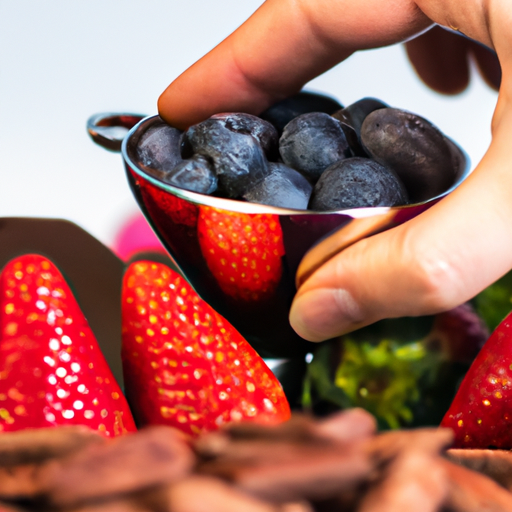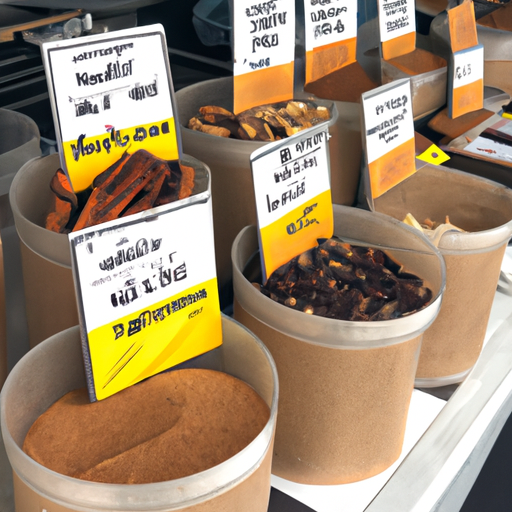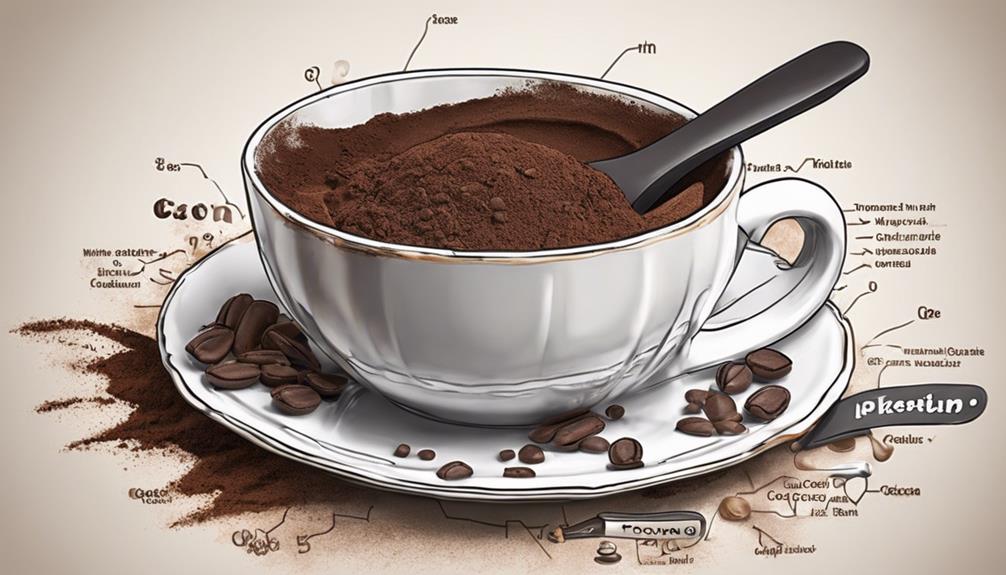Have you ever pondered why raw cacao causes bowel movements? I have some intriguing information to share with you.
It turns out that the composition of raw cacao, along with the complex gut-brain connection, can stimulate bowel movements in some individuals. Raw cacao contains a good amount of fiber and magnesium, both of which promote healthy digestion. Additionally, the natural compounds found in cacao, such as theobromine, can have a stimulating effect on the digestive system.
However, it’s important to note that not everyone experiences this effect, as individual sensitivity to raw cacao can vary. In fact, some people may even find raw cacao beneficial for their digestion. So, if you’ve noticed a correlation between consuming raw cacao and increased bowel movements, it’s likely due to these factors.
In this article, we’ll explore the science behind why raw cacao may make you poop, as well as discuss potential benefits and precautions to keep in mind.
Key Takeaways
- Raw cacao contains theobromine, which can have a laxative effect and contribute to increased bowel movements.
- Consuming raw cacao in moderation can help promote regular bowel movements and support healthy digestion.
- Individual reactions to raw cacao may vary, and excessive consumption can lead to gastrointestinal discomfort.
- Raw cacao is high in fiber and antioxidants, which can aid in digestion and support a healthy gut microbiome.
The Composition of Raw Cacao
The composition of raw cacao is a fascinating blend of minerals, antioxidants, and phytochemicals that can have a stimulating effect on the digestive system, potentially resulting in increased bowel movements.
One key component of raw cacao is theobromine, a natural stimulant that acts as a mild laxative by relaxing the muscles in the digestive tract. Theobromine content in raw cacao is higher than in processed chocolate, making it more likely to have a noticeable impact on bowel movements.
Additionally, raw cacao is rich in antioxidants, which can help improve overall gut health and promote regularity. The combination of theobromine and antioxidant properties may explain why consuming raw cacao can have a ‘pooping’ effect for some individuals.
Moving forward, it is important to explore the gut-brain connection to understand the full impact of raw cacao consumption on our digestive system.
The Gut-Brain Connection
One possible reason for the effect of raw cacao on digestion could be the strong connection between the gut and the brain. The gut and the brain communicate through a complex network of nerves, hormones, and chemicals. This gut-brain communication is known as the gut-brain axis and plays a crucial role in regulating various bodily functions, including digestion.
Here are four ways in which the gut-brain connection can impact digestion:
-
Emotions: Stress, anxiety, and other emotional states can affect the gut-brain axis and lead to changes in digestion, including increased bowel movements.
-
Nervous system activation: The gut-brain axis can activate the parasympathetic nervous system, which helps promote digestion and bowel movements.
-
Hormonal changes: The gut-brain axis can influence the release of hormones that regulate digestion, such as serotonin and cortisol.
-
Microbiome modulation: The gut-brain axis can also impact the gut microbiome, which plays a crucial role in digestion.
Understanding the gut-brain connection can help explain why raw cacao can stimulate bowel movements. It is important to note that individual responses may vary, and consulting a healthcare professional is always recommended.
Stimulating Bowel Movements
Stimulating bowel movements can be attributed to the effect that raw cacao has on the digestive system. One possible explanation is the high dietary fiber content in raw cacao, which acts as a bulking agent and promotes regularity. Flavonoids, compounds found in raw cacao, have also been shown to have a laxative effect. However, it’s important to note that individual sensitivity to raw cacao can vary. Factors like hydration and water consumption can also influence bowel movements. It’s always recommended to listen to your body and make adjustments to your diet accordingly.
Now, let’s explore the topic of individual sensitivity to raw cacao.
Individual Sensitivity to Raw Cacao
Feeling the rich, velvety indulgence of raw cacao can be a personal journey that awakens your senses and leaves you craving for more. However, individual tolerance to raw cacao can vary, and some people may experience digestive issues after consuming it.
Raw cacao contains natural stimulants like caffeine and theobromine, which can have a stimulating effect on the digestive system. These compounds can increase intestinal contractions and speed up the transit of food through the digestive tract, leading to more frequent bowel movements.
Additionally, raw cacao is rich in fiber, which can also promote regularity. It is important to listen to your body and pay attention to how raw cacao affects your digestive system. If you experience discomfort or excessive bowel movements, it may be necessary to reduce your intake.
Transitioning to the next section, raw cacao also offers potential benefits for overall health.
Potential Benefits of Raw Cacao
Raw cacao has several potential benefits that make it an interesting addition to a healthy diet.
First, it has natural laxative properties, which can help with digestion and relieve constipation.
Second, raw cacao promotes regularity by stimulating the muscles in the digestive system, aiding in the movement of waste through the intestines.
Lastly, raw cacao has detoxification effects, as it contains high levels of antioxidants that help eliminate toxins from the body.
These benefits make raw cacao a valuable ingredient for maintaining a healthy digestive system and overall well-being.
Natural Laxative Properties
When I consume raw cacao, its natural laxative properties gently coax my digestive system into action, ensuring a smooth and satisfying bowel movement.
Raw cacao contains compounds such as fiber, magnesium, and theobromine, which can contribute to its natural laxative effect.
Fiber adds bulk to the stool, promoting regularity and preventing constipation.
Magnesium helps relax the muscles in the gastrointestinal tract, allowing for easier passage of waste through the intestines.
Theobromine stimulates the muscles in the digestive system, further aiding in bowel movement.
These natural remedies found in raw cacao can support digestive health and alleviate occasional constipation.
Incorporating raw cacao into your diet in moderation can be a delicious and nutritious way to promote regularity.
Promotes Regularity
After exploring the natural laxative properties of raw cacao, let’s delve into how it promotes regularity.
Raw cacao contains a high amount of dietary fiber, which is essential for maintaining healthy digestion. The fiber acts as a natural laxative, adding bulk to the stool and stimulating bowel movements. This helps to prevent constipation and ensures that waste is efficiently eliminated from the body.
Additionally, raw cacao contains magnesium, a mineral known for its ability to relax muscles, including those in the digestive tract. This can further aid in promoting regular bowel movements.
So, if you find that raw cacao makes you poop, it’s likely because of its natural laxative effects.
Moving forward, let’s explore the detoxification effects of raw cacao and how it can benefit our overall health.
Detoxification Effects
To experience the detoxification effects of raw cacao, you’ll be amazed at how it can help cleanse and rejuvenate your body. Raw cacao contains a high amount of antioxidants, which play a crucial role in the detoxification process. These antioxidants help neutralize harmful toxins in the body, promoting a healthier digestive system.
One of the key benefits of raw cacao is its ability to stimulate the production of digestive enzymes, which aids in the breakdown and elimination of waste products from the body. Additionally, raw cacao is rich in fiber, which promotes regular bowel movements and helps remove toxins from the colon.
To better understand the detoxification effects of raw cacao, take a look at the following table:
| Detoxification Effects of Raw Cacao |
|---|
| Stimulates production of digestive enzymes |
| Rich in fiber for regular bowel movements |
| Neutralizes harmful toxins |
| Promotes a healthier digestive system |
Incorporating raw cacao into your diet can be a natural way to support your body’s detoxification process. However, it’s important to note that individual reactions may vary. In the next section, we will discuss precautions and considerations to keep in mind when consuming raw cacao.
Precautions and Considerations
Although raw cacao may provide various health benefits, it is crucial to be mindful of any precautions and considerations before consuming it. While raw cacao is generally safe for most people, some individuals may experience certain health implications.
Raw cacao contains caffeine and theobromine, which can have a stimulating effect on the digestive system. This can lead to increased bowel movements and, in some cases, diarrhea. It is important to note that excessive consumption of raw cacao can also cause gastrointestinal discomfort, such as bloating and stomach cramps.
Additionally, raw cacao contains oxalates, which can contribute to the formation of kidney stones in susceptible individuals. Therefore, it is advisable to consume raw cacao in moderation and be aware of any personal sensitivities or medical conditions that may be affected by its consumption.
Transitioning into the subsequent section about ‘other factors that affect digestion,’ it is important to consider various factors that can impact how your body processes and digests raw cacao.
Other Factors that Affect Digestion
When it comes to digestion, there are several factors that can play a role in how our bodies process and eliminate food.
One important factor is our overall diet and lifestyle choices. The foods we consume on a regular basis, as well as our level of physical activity, can greatly impact our digestion.
Additionally, stress and anxiety levels can also have a significant effect on digestion. High levels of stress can disrupt the normal functioning of the digestive system and lead to issues such as bloating, constipation, or diarrhea.
Finally, the health of our gut and the balance of our microbiome also play a crucial role in digestion. The gut is home to trillions of bacteria that help break down and absorb nutrients from our food, and any imbalances in this delicate ecosystem can result in digestive problems.
Overall Diet and Lifestyle
To promote a healthy digestive system, try incorporating more whole foods into your diet and maintaining an active lifestyle. Your dietary habits play a significant role in your digestion. Consuming a diet rich in fiber, fruits, vegetables, and lean proteins can support regular bowel movements and prevent constipation. Drinking plenty of water helps to soften stools and aids in digestion.
Similarly, regular exercise can stimulate the muscles in your digestive tract, promoting efficient movement of food through your system. Aim for at least 30 minutes of moderate-intensity exercise most days of the week.
By focusing on your overall diet and lifestyle, you can create an environment that supports optimal digestion. This can help alleviate digestive issues and promote overall gut health.
Now, let’s explore how stress and anxiety levels can also impact your digestive system.
Stress and Anxiety Levels
To truly understand the impact of stress and anxiety on your digestive system, you need to recognize how these emotions can wreak havoc on your gut health.
Stress management plays a crucial role in maintaining a healthy digestive system. When we are stressed or anxious, our body releases stress hormones like cortisol, which can disrupt the normal functioning of our digestive system. This can lead to digestive disorders such as irritable bowel syndrome (IBS) or inflammatory bowel disease (IBD).
To manage stress effectively, try incorporating relaxation techniques like deep breathing exercises, yoga, or meditation into your daily routine. Additionally, regular exercise can help reduce stress levels and improve overall gut health.
By prioritizing stress management, you can support a healthy digestive system and reduce the chances of experiencing digestive disorders. This is especially important when it comes to gut health and the delicate balance of your microbiome.
Gut Health and Microbiome
Maintaining a healthy gut microbiome is like nurturing a flourishing garden in your digestive system. The balance of good bacteria in your gut is crucial for optimal digestion and overall well-being.
When it comes to gut health and the consumption of raw cacao, there are a few things to consider. Raw cacao contains a high amount of fiber, which can promote healthy bowel movements. Additionally, raw cacao is rich in antioxidants that help reduce gut inflammation.
However, it’s important to note that raw cacao may not have the same effect on everyone. If you’re experiencing digestive issues after consuming raw cacao, it could be due to individual sensitivities. In such cases, probiotic supplementation or alternative ways to enjoy raw cacao may be worth exploring.
Alternative Ways to Enjoy Raw Cacao
Indulging in raw cacao opens up a world of delicious possibilities for incorporating its rich flavor into your daily routine. Here are five fantastic ways to enjoy raw cacao:
-
Healthy cacao smoothie recipes: Blend together a ripe banana, almond milk, a tablespoon of raw cacao powder, a handful of spinach, and a scoop of protein powder for a nutrient-packed and indulgent smoothie.
-
Using raw cacao in baking recipes: Replace regular cocoa powder with raw cacao in your favorite baking recipes for a more intense and complex chocolate flavor. Try adding it to brownies, cookies, or even chocolate cake for a decadent treat.
-
Raw cacao energy balls: Mix together raw cacao powder, dates, nuts, and a pinch of sea salt to create energy balls that are delicious and packed with nutrients.
-
Raw cacao hot chocolate: Heat up some almond milk, stir in raw cacao powder, a touch of sweetener like honey or maple syrup, and top it off with a dollop of coconut whipped cream for a cozy and indulgent treat.
-
Raw cacao overnight oats: Mix together rolled oats, chia seeds, almond milk, raw cacao powder, and a sweetener of your choice. Let it sit overnight in the fridge, and in the morning, you’ll have a delicious and nutritious breakfast.
These are just a few ways to enjoy the rich flavor of raw cacao. Incorporating it into your diet can be a healthy and delicious way to satisfy your chocolate cravings. Moving on to the conclusion and final thoughts…
Conclusion and Final Thoughts
In conclusion, incorporating raw cacao into your daily routine can add a delicious and nutrient-packed twist to your favorite recipes and provide a satisfying way to indulge your chocolate cravings. However, it’s important to be aware of the potential health risks and long-term effects.
Raw cacao contains a compound called theobromine, which acts as a natural stimulant and can have a laxative effect on some individuals. This may explain why raw cacao can make you poop. While this may be a benefit for those experiencing constipation, it’s important to consume raw cacao in moderation to avoid any potential digestive discomfort.
Additionally, raw cacao is high in antioxidants and minerals, but it also contains caffeine, which can have negative effects on sleep and anxiety levels in some people. As with any food, it’s important to listen to your body and consume raw cacao in a way that works for you.
Frequently Asked Questions
Can raw cacao cause constipation?
Raw cacao can cause constipation in some individuals due to its high fiber and caffeine content. These factors can slow down digestion and lead to difficulty in passing stools. It is important to drink plenty of water and consume raw cacao in moderation.
Does raw cacao have any impact on gut health?
Raw cacao is a magical bean that not only satisfies our chocolate cravings but also promotes a healthy gut microbiome. It contains antioxidants and fiber, which support digestion and nourish the beneficial bacteria in our gut.
Can raw cacao help with weight loss?
Raw cacao can potentially aid weight loss by promoting hormonal balance and improving cognitive function. Studies suggest that it may enhance metabolism, reduce appetite, and boost mood, contributing to a healthier body weight.
Is it safe to consume raw cacao daily?
Yes, it is generally safe to consume raw cacao daily. Raw cacao has potential health benefits for cardiovascular health due to its high antioxidant content, which can positively impact overall well-being.
Can raw cacao affect sleep patterns?
Raw cacao can disrupt sleep patterns, particularly REM sleep, due to its stimulant effects. Consuming raw cacao before bed may lead to insomnia. It’s important to be mindful of its impact on sleep and adjust consumption accordingly.
Does the Digestive Effect of Raw Cacao Counteract Its Health Benefits?
The digestive effect of raw cacao is not likely to counteract the health benefits of raw cacao. In fact, consumption in moderation may contribute to improved heart health, better cognitive function, and enhanced mood. The health benefits of raw cacao are numerous and should not be dismissed.
Conclusion
In conclusion, raw cacao is truly a magical ingredient that can have a profound impact on our digestion. Its unique blend of nutrients and compounds can stimulate bowel movements like no other. From its composition to its effects on the gut-brain connection, raw cacao has the power to make you feel like you have a turbocharged digestive system.
So, if you’re looking for a natural way to get things moving down there, raw cacao is your answer. Just be sure to consume it in moderation and listen to your body’s signals.
Happy pooping!










